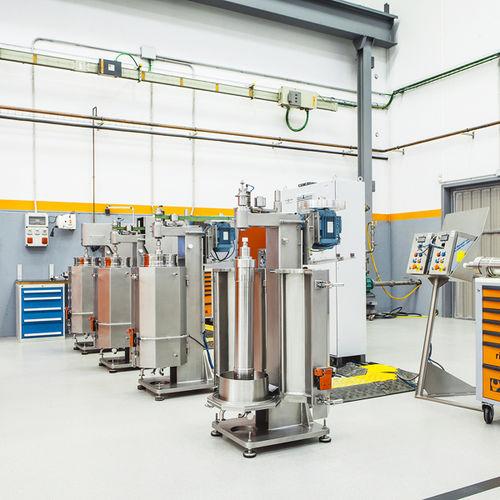Blood plasma centrifuge
Efficiently separating blood cells from plasma is key in the accuracy of diagnostic tests, as cellular fractions can create inconsistencies in final results. Centrifugation is the common technique used to separate solid particles dispersed in a liquid and efficiency depends on the rotational speed. The right centrifuge for this application could be a super centrifuge that works at higher velocities and that is capable to handle both the separation and clarification process of the plasma components.

Extracting very fine impurities
The RINA SRP C by Riera Nadeu are super centrifuges used to recover or remove suspended impurities from liquids. It has a vertical decanting tubular bowl centrifuge turning at very high speed (15.000G mini). Its high G factor generates the separation strength. The G factor, also known as RCF, relative centrifugal force, is the force exerted on the rotor contents. Solid settles and accumulates on the suspended rotor’s cylindric ferrule while it clarifies the processed liquid extracted. If the rotor is full, the equipment is stopped to discharge the solid manually.
The RINA SRP C offers easy operation and requires low maintenance. A full opening casing works to lower the noise emissions, guarantee the centrifuge’s safe operation, and easier extraction from the front side following GMP requirements. The casing also can regulate the temperature by installing heating and cooling coils. The heating or cooling coils either minimize heat transfer by the rotating rotor’s mechanical heat or warm the product up. The RINA SRP C is also adaptable to work in an explosive hazardous area. It also can equip with CIP and SIP systems and, when necessary, install even auxiliary or complementary devices.
Benefits
- Sterilizable
- High-reliability
- Full opening doors
- Simple and compact design